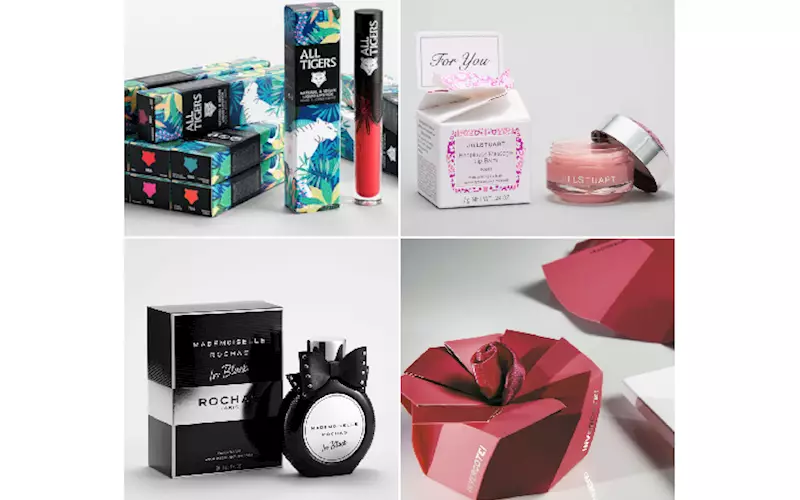Unbox series – a meeting point for brands, consumers and packaging design
Closed shops and plunging sales, the pandemic has driven the brands to move into the digital era from augmented reality to chatbots to digital events. But products have to be delivered and communication established. In this conversation with Hema Java of CH Java & Company, WhatPackaging? finds out the reasons behind Holmen Iggesund’s launch of Unbox series on the digital platform
17 Apr 2021 | By Abhishek Muralidharan & WhatPackaging? Team
According to the latest industry report, the global eCommerce market was valued at USD 4.20-trillion in 2020 and is expected to reach USD 4.891-trillion in 2021, led by the likes of Amazon, Alibaba, and Walmart. In India, the eCommerce market is expected to touch USD 84-billion in 2021 and grow to USD 200-billion by 2026.
eCommerce is disrupting traditional retail at an accelerated pace, building brands has become increasingly complex and the customer experience is getting harder to optimise.
Previously, a consumer who picked up products from the stores could physically see and touch and interact with a product. Unboxing, which started in the mid-2000s among the tech-savvy, appreciated the smart design of the packages and became a precious moment of brand communication. For example, Apple’s packaging was as good as the product. Videos were taken and posted on YouTube and websites.
Today, the brands are relying on an ever-growing number of touchpoints, digital platforms and channels to communicate its brand value. It's a strong enabler to interact, communicate and leverage the customer experience in smart packaging.
Holmen Iggesund, makers of two paperboard brands – Invercote and Incada – have recently entered the fray using the digital channel – Unbox – as a series of digital events to converse with experts on how to create a deeper engagement with consumers.
“The idea is to explore the many challenges and opportunities that brands will face today and in the future,” says Hema Java of CH Java & Company, which represents Holmen Iggesund in India.
Unbox#1 was a gathering of industry experts and brand owners, which discussed the latest culture and technology trends. “The initial topic of discussion at Unbox#1 focused on the changes in consumer behaviour and aims to unpack the ways in which brands can create engaging experiences via digital channels and how this puts new demands for purposeful packaging solutions,” Java adds.

Hema Java of CH Java & Company
Benefit for brands from digital channels
Consumer information is the key insight one can achieve from digital channels. Brands can use the digital channels to listen to its community and deliver a product suited for their requirements and focus on adapting the product to match the customer expectations with the help of open dialogue.
Also, be it the brands' website, retailer’s website, Amazon marketplaces, television shopping or livestream shopping, all of these can be viewed as a good opportunity to grow the brand presence, increase sales and have various touchpoints with customers.
“Digital channels such as Instagram or the brand's own website are also great for putting into play the ‘hype marketing’ concept where the supply is smaller than the demand,” explains Java. She cites the example of OnePlus mobile phones or high-end sneaker launches. “This helps boost the demand and also hypes up the product and brand value, since there is an element of aspiration to own a limited item.”

eCommerce redefines the packaging landscape
Earlier, eCommerce was viewed as only for start-ups, but after the Covid-19 pandemic, it has become the preferred way of shopping and has grown exponentially, as consumers were indirectly forced to shop online.
The consumer used to have a lot of influences while making a purchase such as stepping into the store, interacting with the salespersons, the fragrance in the showroom and lastly the joy of walking out with a glossy shopping bag. “Now, due to eCommerce, the unboxing has to deliver all of these experiences putting a lot more importance on the packaging,” stresses Java.
This puts the packaging to the test on several fronts such as the condition of the package, the colour, the feel and the visual message the packaging delivers. Furthermore, the experience of opening the package and getting the product you ordered in mint condition is extremely important.
Java says, “In addition, the brand can build goodwill by sending with the package some tester samples or gift cards with discounts on the next purchase to close the last loop and forge alliance from their customer by making them feel special with these freebies.”

What you see is what you get?
With the boom in packaging, the focus of the package design shifts to what appears on the screen or on the shelf rather than its functionality. With online deliveries, there’s instant delivery, which puts pressure on transport, plus a return policy means taking the products back and repackaging it.
Java feels it's not an either-or situation. “The brands would have to focus on the packaging from all viewpoints. The packaging design should be such that it can be sold in retail and online. Iggesund Paperboard has also come up with a deep dive on how to design packaging for omnichannel retailing, which is available for free download on their website. This way every aspect of the packaging – the look, feel, design and functionality are all going to come into play.”
However, Java says, customers, these days also appreciate the reusability of the package such that the brand puts in an element of afterlife-of-the-box even after the product is delivered and opened by the customer. It becomes a positive talking point for the brand. “For example, the brand Hill Cart Tales has their tea packaging in paperboard where it focuses on the delivery of the tea-bag in perfect condition to the customer and the afterlife of the same package is to be used as a coaster for the teacup when you are drinking the tea.”

So, what’s the role of smart packaging?
Brands can use smart packaging in its simplest form – QR codes – so that customers can download ingredient lists, how-to guides, tutorials by local influencers, sustainability information, recycling mechanism, alternative uses of the primary and secondary packaging beyond the life of the product, and much more.
“Smart packaging should not be viewed as a gimmick or a one-of sales tool, but as a foundation for product development,” stresses Java.
Hema Java: Takeaways from Unbox #1
My key takeaways are that firstly, online shopping is only going to get bigger. It is not something new that is just restricted to start-ups or new launches. Brands that are solely in retail or have traditional brick-and-mortar stores would be venturing into eCommerce so as to not miss out on willing customers. Secondly, smart packaging is the future and brands must make use of the space on the package to deliver useful information and engage further with their consumers. And lastly, with shopping moving more and more online, the packaging and the unboxing experience now plays a bigger role in trying to deliver to the buyer a pleasant purchase experience.
Hema Java: What is in line for Unbox #2?
Unbox #2 is scheduled for the 28 April 2021 at 12.30pm IST. According to Hema Java, it explores one of the biggest challenges and game-changers ahead – the transition to a circular economy. Government regulations are now pushing brands across industries to rethink everything from product development to design and recycling systems. The session will shed light on how to create a sustainable business in a circular economy and what role packaging can play.
Click here and select the timing of 12:30pm IST to sign up for the event














 See All
See All